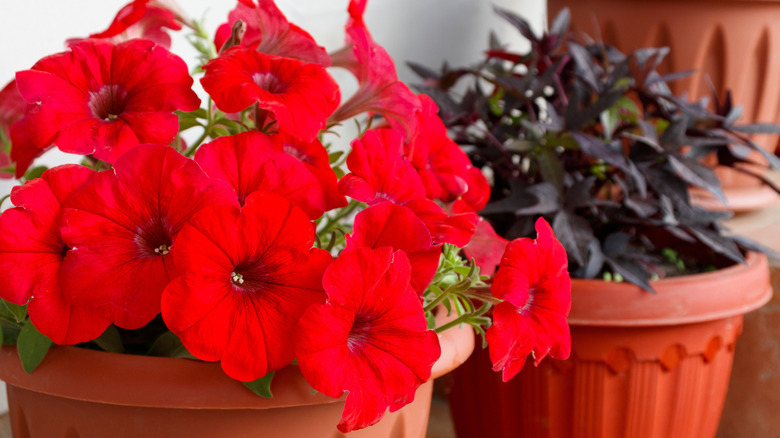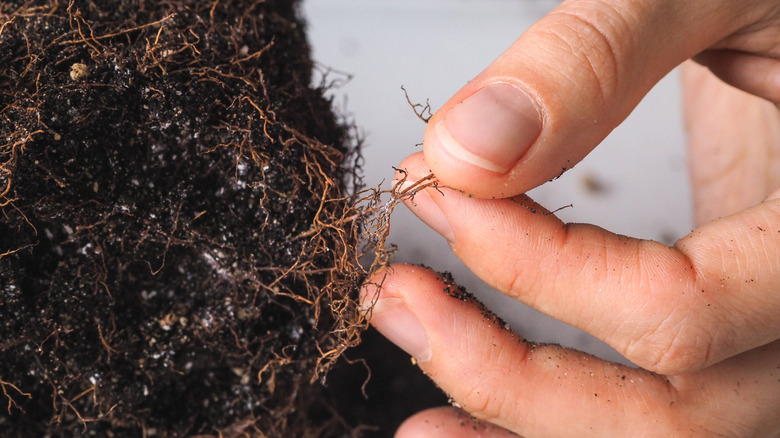The Best Way To Save Your Beautiful Petunias From Root Rot
Under the right conditions, petunias can flourish in a spring and summer garden. On the other hand, a wilting plant can be a sign that something is going wrong beneath the surface. Root rot can quickly destroy a petunia plant, and even spread to others, so it's important to identify and treat this problem right away.
Root rot can occur for a couple of different reasons — when the soil's moisture is high, the soil is cool, or the soil's pH is greater than 6.5. Ultimately, it can cause mushy or discolored roots – healthy roots will be white or some other light color — as well as sparse root hairs. Wilted and yellowing leaves, or stunted plant growth, can provide clues to the presence of root rot, but you'll need to look at what's happening in the soil to be certain. Petunia stems below ground may develop long, black cracks, with the roots containing sunken black lesions. The plant may even have a rotting smell, and as the root rot spreads, the crown and lower stem may similarly blacken.
Petunias thrive in full sun with moist, well-drained soil. Gardening mistakes like overwatering can create an environment where fungus thrives. The key to stopping root rot, and bringing petunias back to life, is multifold — keep the soil well-drained, monitor the soil's pH, regularly prune, sanitize pots and gardening equipment, and treat plant roots with fungicide if necessary.
Treating and preventing root rot
Root rot in petunias can be caused by several different kinds of fungal pathogens, including Phytophthora, Pythium, Berkeleyomyces, and Rhizoctonia. Each of these fungi loves wet soil conditions, and Pythium and Phytophthora even produce spores that can survive in soil and plant matter for extensive periods.
Start by removing the infected plants from the affected pot and assess the damage. Shake away soil and rinse roots to remove old potting mix. If the root rot is severe — with most of the foliage wilted and the roots rotten — then the plant should probably be discarded. However, if damage is minimal, you can begin treatment by trimming back rotten roots and wilted leaves. Use fresh soil and a new pot with plenty of drainage to replant the petunias. While fungicide is expensive, and can be hard to find for home gardens, it can be applied to plants that haven't been impacted yet to prevent future rot problems.
Ensure your new soil is moist but not wet. Petunias should be watered once a week and fertilized monthly with a balanced fertilizer. In order to prevent future problems, it's important that your soil drains well. Use well-draining pots and commercial potting mix that includes organic material like peat moss. Remember that you shouldn't use rocks in your raised garden beds because they can inhibit air flow and prevent drainage. Finally, sanitize any pots, pruning shears, and other gardening equipment that came in contact with an infected plant. Disinfect with a 10% bleach, alcohol, or detergent solution.

